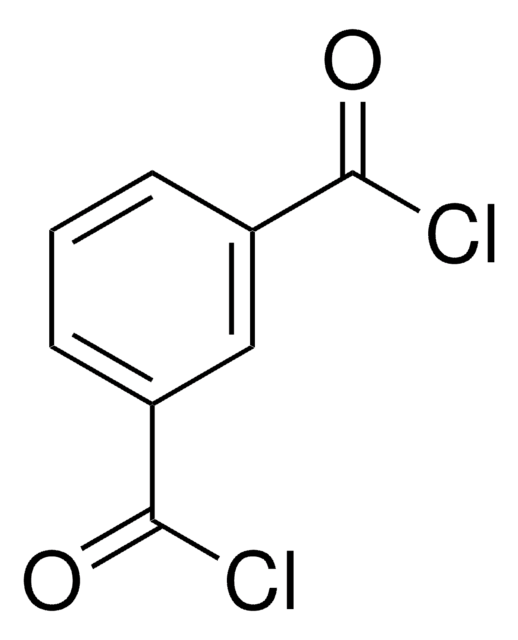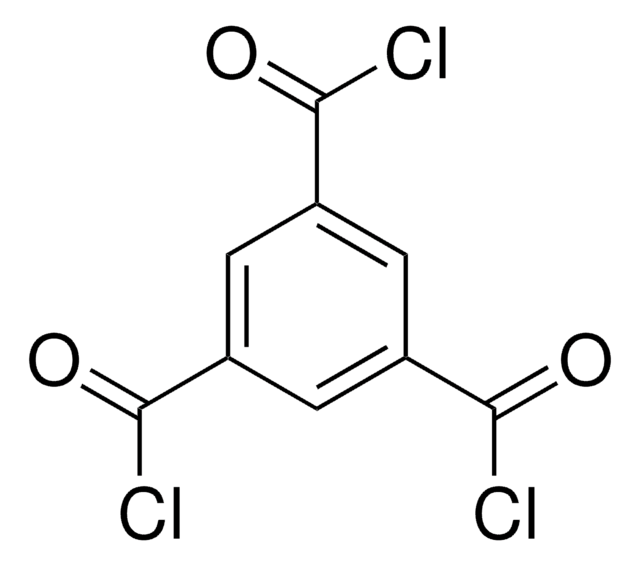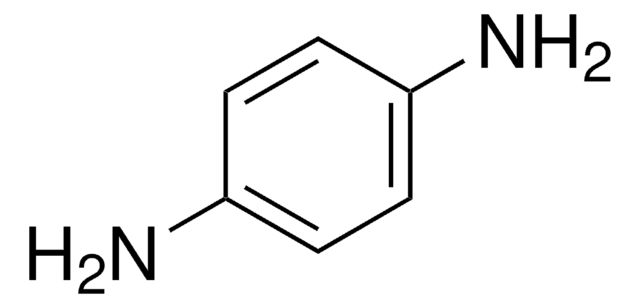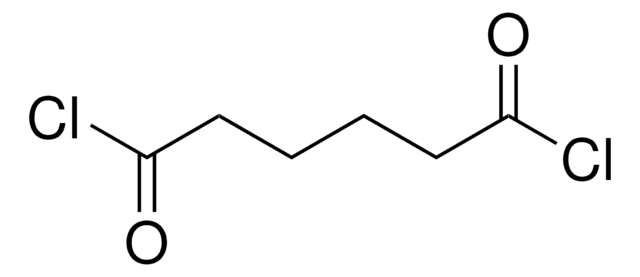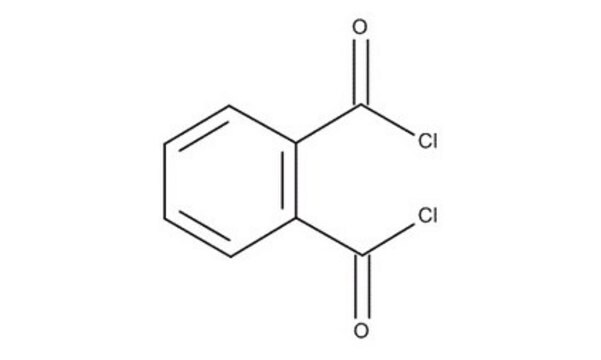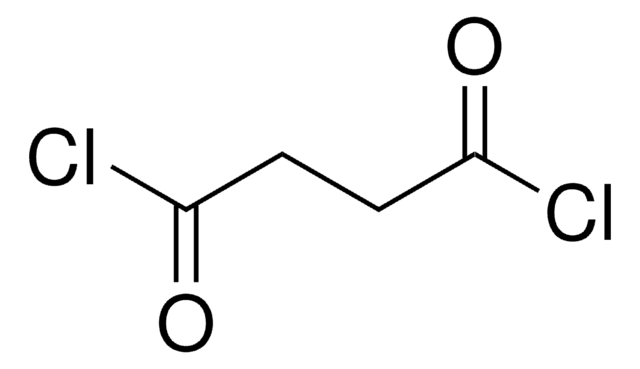120871
Terephthaloyl chloride
≥99%, flakes
Sinônimo(s):
Terephthalic acid chloride, Terephthaloyl dichloride
About This Item
Produtos recomendados
densidade de vapor
7 (vs air)
Nível de qualidade
pressão de vapor
0.02 mmHg ( 25 °C)
Ensaio
≥99%
Formulário
flakes
p.e.
266 °C (lit.)
pf
79-81 °C (lit.)
solubilidade
ethanol: soluble 100 mg/mL, clear, colorless
grupo funcional
acyl chloride
cadeia de caracteres SMILES
ClC(=O)c1ccc(cc1)C(Cl)=O
InChI
1S/C8H4Cl2O2/c9-7(11)5-1-2-6(4-3-5)8(10)12/h1-4H
chave InChI
LXEJRKJRKIFVNY-UHFFFAOYSA-N
Procurando produtos similares? Visita Guia de comparação de produtos
Categorias relacionadas
Descrição geral
Aplicação
Informações legais
Palavra indicadora
Danger
Frases de perigo
Declarações de precaução
Classificações de perigo
Acute Tox. 3 Inhalation - Eye Dam. 1 - Skin Corr. 1A - STOT SE 3
Órgãos-alvo
Respiratory system
Código de classe de armazenamento
6.1A - Combustible acute toxic Cat. 1 and 2 / very toxic hazardous materials
Classe de risco de água (WGK)
WGK 1
Ponto de fulgor (°F)
356.0 °F - closed cup
Ponto de fulgor (°C)
180 °C - closed cup
Equipamento de proteção individual
Eyeshields, Faceshields, Gloves, type P3 (EN 143) respirator cartridges
Escolha uma das versões mais recentes:
Já possui este produto?
Encontre a documentação dos produtos que você adquiriu recentemente na biblioteca de documentos.
Os clientes também visualizaram
Artigos
Molecular Layer Deposition of Organic and Hybrid Organic-Inorganic Polymers
Global Trade Item Number
| SKU | GTIN |
|---|---|
| 120871-1KG | 4061825590967 |
| 120871-250G | 4061838716651 |
| 120871-5G | 4061831828214 |
Nossa equipe de cientistas tem experiência em todas as áreas de pesquisa, incluindo Life Sciences, ciência de materiais, síntese química, cromatografia, química analítica e muitas outras.
Entre em contato com a assistência técnica